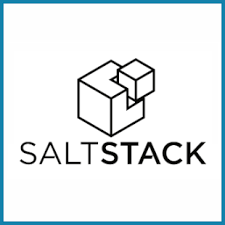
Liam
23 Jan, 2016

SaltStack Vagrant Part 2
Last week we talked about creating a simple httpd service when we spin up our vagrant VM. This week I will continue to talk more about Salt.
Inside The Vagrant Virtual Machine
Salt run in /srv/ folder in our VM. Therefore our folder structure in virtual machine will look like this.
- /srv/
- pillar/ # Unlike state tree, pillar data is only available for the targeted minion specified by the matcher type.
- salt/ # All the configuration for the minion to run
- /etc/salt/
- minion #minion configuration
- master #master configuration
Running in Master-less vs Master mode
- Master-less mode
salt-call --local state.highstate
- Master mode: salt-minion need to accept the salt-key first
salt '*' state.highstate
For running vagrant, we use master-less mode, the different between master mode and master-less mode shouldn't be large.
Objective
To create user(s) base on pillar files, uninstall httpd and install nginx
Coding
- Vagrantfile: mount the desired folder to your VM
config.vm.synced_folder "salt/root/", "/srv/salt/"
config.vm.synced_folder "salt/pillar/", "/srv/pillar/"
- /srv/pillar/users/init.sls: Sensitive user data
users:
henglim.ng:
uid: 1000
fullname: Heng Lim Ng
groups:
- wheel
- /srv/pillar/top.sls: Include any new pillar data here
base:
'*':
- users
- /srv/salt/top.sls: the list of action we want to perform in env 'base', according to our objective
base:
'*':
- httpd.absent
- user
- nginx
- /srv/salt/user/init.sls: make use of our pillar users
{% raw %}
{% for username, user in pillar.get('users', {}).items() %}
{{username}}:
user.present:
- fullname: {{user.fullname}}
- shell: /bin/bash
- home: /home/{{username}}
- groups: {{user.groups}}
{% endfor %}
{% endraw %}
- /srv/salt/httpd/absent.sls: make sure we uninstalled the httpd that we have installed
httpd: # ID declaration
pkg.removed: []
/var/www/html/index.html:
file.absent: []
- /srv/salt/nginx/init.sls: yum search for
nginx, if found, installnginxand enable it.
nginx: # ID declaration
pkg.installed: []
service.running:
- enable: True
To Be Continue
In this post I mainly described how to make use of pillar to manage our VM user, uninstalling and installing of services using yum packages. Stay tuned for the SaltStack Vagrant Part 3.